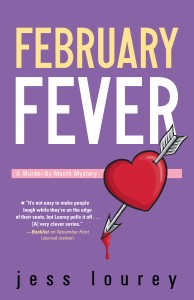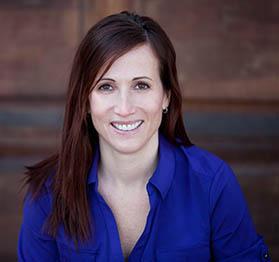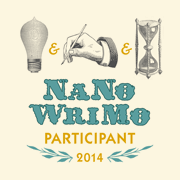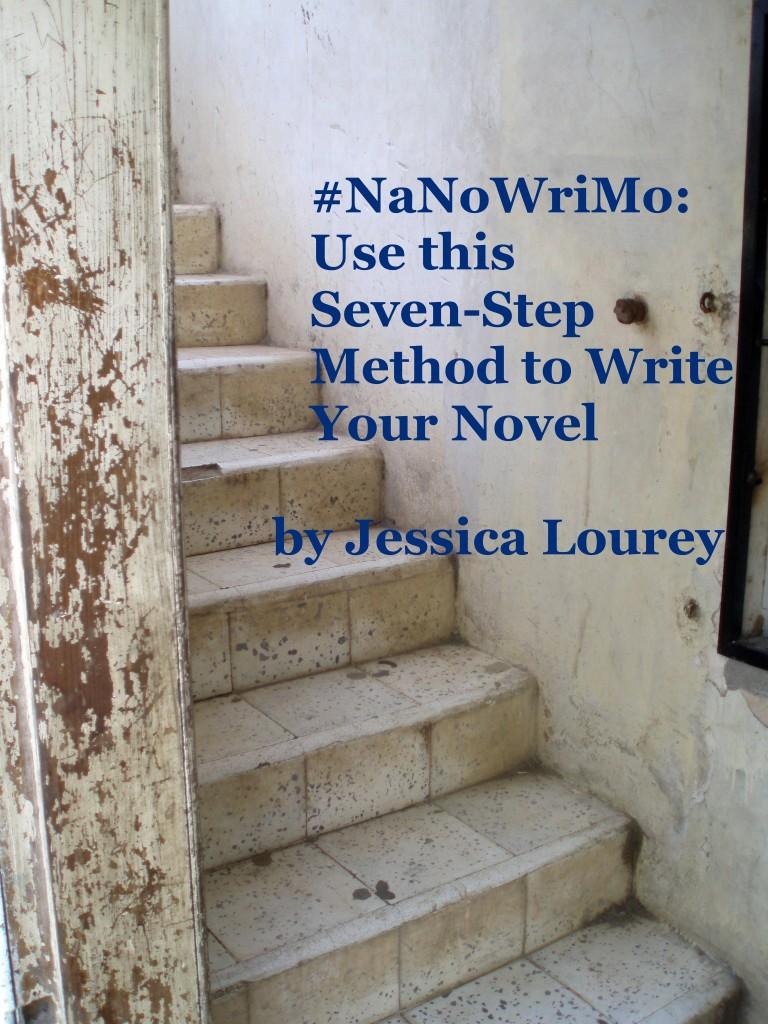#NaNoWriMo: Use this Seven-Step Method to Write Your Novel by Jessica Lourey
I can’t believe it: National Novel Writing Month starts Saturday. And if you’re way behind in planning, I have a treat for you. For today’s tip, I’m featuring an article by acclaimed mystery novelist Jessica Lourey that will give you everything you need to plan your novel for November. And if you’re in the Milwaukee area, she’ll be appearing at Murder and Mayhem this coming Saturday, November 1, 2014.
Happy Writing! Rochelle, the Write Now! Coach
I’ve got a great idea for a novel—it’s a heart-pounding adventure and the main character is young, she’s on a mirror planet where she possesses magical powers, and she’s a hamster.
This is a snippet from a conversation I had with a guest at a recent book signing. As our chat continued, it became clear that he was passionate about his hamster adventure and had devoted many brain-hours to fleshing it out. “How far along is it?” I asked. “What?” “Your novel,” I said. “How many pages have you typed?” “Oh, I’m no writer, as much as I’d like to be. I just come up with the ideas. That’s the hard part, right?”
While there are a lot of things wrong with this conversation (start with “hamster adventure” and work your way to “That’s the hard part, right?”), the one that stuck with me was this: “I’m no writer.” This fellow was so juiced about his concept that he shared it with perfect strangers, yet he had no idea how to translate it into a novel.
I can’t tell you how many people just like him I’ve encountered on book tours and in my classroom. These are people who dream of turning their unique idea into a book but are too intimidated by the process to take that first step. Or, they start writing and soon become overwhelmed and demoralized.
I’m here with some good news: Writing a novel is a process you can navigate. I’ve created a writing pyramid that illustrates how to plot your path, guiding you from a crucial one-sentence summary of your book (the base of the pyramid) to progressively higher levels until you’ve created a finished manuscript.
 I’ve used this approach to develop my critically acclaimed six-novel Murder-by-Month mystery series from Midnight Ink, so I know it works. If you’ve got a great idea and you’re ready to turn that spark into a full-fledged novel, all you have to do is carve out some time and follow these seven straightforward steps.
I’ve used this approach to develop my critically acclaimed six-novel Murder-by-Month mystery series from Midnight Ink, so I know it works. If you’ve got a great idea and you’re ready to turn that spark into a full-fledged novel, all you have to do is carve out some time and follow these seven straightforward steps.
1. Summarize your novel in one sentence.
Begin the process by distilling your idea into its purest form. Don’t include specific names or places now; the idea is to be purely conceptual. Here’s an example of a one-sentence summary for H.G. Wells’ classic novel The Time Machine: An English inventor travels thousands of years into the future, discovering the devolution of humanity where he had hoped to find utopia. It’s tempting to pack lots of detail into the one-sentence summary. Your idea is complex, your characters multifaceted, your setting diverse. How can you condense all of that to a handful of words? I know the challenge. Here is my first attempt at crafting a guiding one sentence summary for November Storm, the novel I’m now writing for my series:
Mira James, a new PI license and copy of Private Investigation for Dummies in hand, is asked to look into a suspicious hunting accident in northern Minnesota and instead uncovers a secret that threatens to topple the community. Meanwhile, another dead body is thrown into her path, and she is forced to juggle a budding relationship with blue-eyed Johnny Leeson with an uncomfortable attraction to Gary Wohnt, local police chief, while her kinetic sidekick, Mrs. Berns, flies the coop, leaving Mira to work it out on her own.
Besides being one sentence too long, this summary includes extraneous detail that is important to me but not crucial to the task. Again, the goal of Step 1 in the writing pyramid is to take an aerial snapshot of your novel, capturing only the large structure. So, after I cut away the subplots, supporting characters, and superficial detail, I was left with this summary of November Storm:
A newly minted Minnesota PI investigates a suspicious hunting accident, uncovering a brutal small-town secret.
If you craft this sentence well, it will not only give your entire writing process a boost, but you’ll have a powerful selling line to use with a future agent or potential reader.
2. Now expand your one-sentence summary into a full paragraph. Include the status quo at the beginning of the novel, what obstacles the protagonist encounters, and how the novel ends. This isn’t the time for secrets. Lay it all out. If it is helpful, freewrite or mindmap, using key names or phrases from your Step 1 summary as your launch point. Based on my one-sentence summary of The Time Machine, for example, I would use “English inventor,” “thousands of years into the future,” and/or “devolution of humanity.” Here is that single sentence summary expanded into a full paragraph (note: spoiler alert in case you’re planning to read his novel!):
The book opens with the Time Traveler dining with peers in late 1800s England, where he is trying to convince them that he’s invented a time machine. His guests are naturally skeptical. They arrange to dine again in a week, and when they return, the Time Traveler tells them he’s visited the future. He discovered two humanoid races remaining on the planet: the beautiful and childlike Eloi, and the subterranean, haunted Morlocks. He explains his idyllic time eating fruit with the Elois and exploring the area, followed by his discovery that the Morlocks raise and harvest the Eloi like cattle. He ends by describing his escape from the time period, including his burning of the forest, the wresting of his time machine from the Morlocks, and the loss of Weena, his Eloi friend. Distraught, he travels further into the future where he witnesses the death of humanity and the planet. Finally, he returns to the time period he left, providing an exotic flower from Weena as proof of his travels.
Note that the ending must be given away to make this paragraph work. This summary is for your eyes only, and it’s dynamic. You’ll find yourself returning to tweak it as you continue up the writing pyramid, and that’s OK. Revising as new ideas occur is one of the exciting elements of writing.
3. Invite your characters in. So: You’ve taken a snapshot of your novel’s point and created a rudimentary outline of how to get there. Now is the time to create a sourcebook, or character bible, for profiling each of your significant characters. I handwrite my character bibles, but a computer works just as well. Devote at least a page to each character. Include the following information:
Name and photograph. The photo is optional, but if you come across a picture of someone in a magazine or newspaper, or an old family photograph that reminds you of your character, slipping that photo into the character’s page is an effective way to spur creativity and flesh out characterization. For example, I have a photo of actress Betty White in the character page for Mrs. Berns, the wonderfully spicy octogenarian who regularly appears in my series. Physical characteristics. This includes the basics of height, weight, hair and eye color, etc. Age. Include the actual birth date if it’s relevant.
Personality traits and their source. For example, is the character lazy because her mother always picked up after her? Does he love baseball because it’s the only game his father ever played with him?
Quirks. These are one or two imperfections that make your character human, such as a tendency to hum when nervous.
Goals and motivation. Ask yourself what your character wants and why he or she wants it.
Conflict. List the obstacles, large and small, that the character faces in achieving his or her goals.
Growth. How is this character going to be different at the end of this novel than at the beginning?
General story line. Draft a three to five-sentence summary of the character’s story arc; this will be a character specific version of the novel summary you wrote in Step 2. Remember that you as the author always need to know more about your characters than your reader ever sees. This inside information allows you to create a multi-dimensional, internally consistent population for your novel.
Beware that Step 3 is an easy place to get sidetracked; keep your character outlines to one page per person so the process doesn’t morph from novel writing to scrapbooking.
4. Sketch your setting. If you don’t yet have a notebook for your novel, buy one. You want to physically draw the neighborhood(s) and the interior space(s) where most of your story will take place. No fear—you don’t need to be an artist to do this. If you’re sketching a room, for example, just chicken-scratch the major pieces of furniture and placement of windows and doors, as well as which direction is north. If your book is set mostly in a neighborhood or town, sketch out the relevant cross streets and put labeled boxes where you imagine all the businesses and houses would be.
The setting sketches anchor your writing and allow you to maintain congruity in your place descriptions. If you have space, staple in a photo or two if you come across an image that visually captures an element of your setting.
5. Develop each sentence in Step 2 into a full-page description.
Include at least two sound, two smell, and two feel details on each page. For example, let’s take the first sentence of The Time Machine summary that I created in Step 2: The book opens with the Time Traveler dining with learned peers in late 1800s England, where he is trying to convince them that he has invented a time machine.
If I were to expand this to one page, I would describe the characters’ clothes, the smell and flavor of the food they’re eating, the feel of the tablecloth under their hands, the clank of the forks on their plates. I would include preliminary research into the political issues, mores, and scientific breakthroughs of England in the late 1800s so I could include accurate conversational topics and make sure I got the clothes and hairstyles correct. Specific to the topic of a time machine, I’d brainstorm and roughly outline the give-and-take that would occur if someone told me they’d invented a time machine. Do this for every sentence in Step 2.
6. Do a rough outline of the novel. Remember the words of Robert Frost: “No surprise in the writer, no surprise in the reader.” A chapter-by-chapter, detailed outline is laborious to craft and restricts the creative drive when it comes time to actually write the novel. I recommend instead generating a rough outline that highlights only the major conflicts and character interactions, essentially a more complex version of the summary you completed in Step 2. This “big picture” outline allows you to always have something exciting to write toward without eliminating the joy of discovering what your characters will do when left to their own devices.
7. Write the novel. This is it. The training wheels are off. You have a snapshot of your novel and a rough map for creating it. You know which characters you’re bringing in, what they’ll face, and in what locations they’ll face it. Start writing the story from the beginning, and don’t stop until you have a complete first draft. Writing a novel really is this straightforward when you break it into the seven manageable steps of the writing pyramid. Good luck! And if you see a hamster adventure tale on the bestseller list in a year or two, you’ll know who’s to blame.
 About the author. Jessica (Jess) Lourey is best known for her critically-acclaimed Murder-by-Month mysteries, which have earned multiple starred reviews from Library Journal and Booklist, the latter writing, her books are “a splendid mix of humor and suspense.” Jessica also writes sword and sorcery fantasy as Albert Lea and edge-of-your-seat YA adventure as J.H. Lourey, and is branching out into literary fiction, including magical realism, under her given name. You can check out her Kickstarter project to bring her latest book to a wide audience here.
About the author. Jessica (Jess) Lourey is best known for her critically-acclaimed Murder-by-Month mysteries, which have earned multiple starred reviews from Library Journal and Booklist, the latter writing, her books are “a splendid mix of humor and suspense.” Jessica also writes sword and sorcery fantasy as Albert Lea and edge-of-your-seat YA adventure as J.H. Lourey, and is branching out into literary fiction, including magical realism, under her given name. You can check out her Kickstarter project to bring her latest book to a wide audience here.
She is a tenured professor of creative writing and sociology at a Minnesota college. When not teaching, reading, traveling, writing, or raising her two wonderful kids, you can find her dreaming big, playing with her dorky dog, or watching craptastic SyFy original movies. Visit her website at www.jessicalourey.com or her Facebook page at https://www.facebook.com/jess.lourey











Hey — I super appreciated this outline! I’m going to try incorporating it’s outline strengths and recommendations into my non-fiction memoir writing project…a story that I’ve long known would be handled so much better by a fiction writer, than by me (not because it’s not entirely true, but because it deserves the deft writing skills of character, scene, setting, plot, etc…to bring it properly to life…which I honestly suck at!)
With this outline, I might actually be able to move a wee bit, at least & at last, in that direction.
Thank you!
Yeah!
That’s great to hear, Naomi! The method works well for nonfiction and short stories, I’ve found, as well as novels. Best of luck!
Love this! I used it for my first mystery, and it helped me get started. Hoping to get the next one started the same way. Just organized enough to help this pantser focus. Thanks!
So glad to hear it works! I find this to be the best system I’ve found. And Jess writes brilliant books!